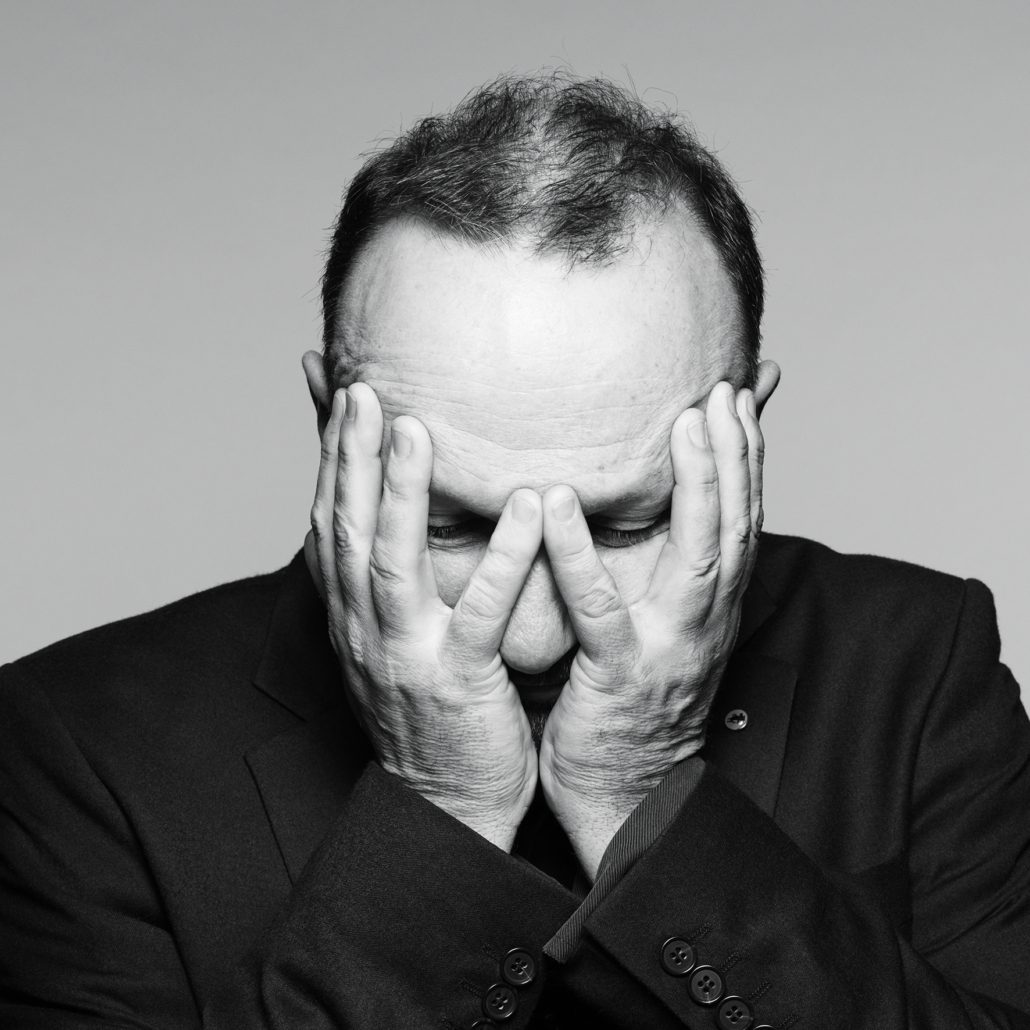 448
448  7 mins
7 mins During his 36 year long career, David Beeney suffered in silence from panic attacks and anxiety. When he finally came out, he made the decision to dedicate his life to eradicating the stigma associated with mental health.
He started his business, Breaking The Silence, and has now become one of the leading advisors in the UK on mental health in the workplace. Through his work, David has helped many leading brands to create kinder and more compassionate cultures.
In 2018 and 2019, he was recognized as one of the 101 Global Influencers in Employee Engagement. But perhaps more importantly, he is opening up conversations around mental health in unprecedented ways with his simple yet effective approach.
How did Breaking The Silence begin? Can you share your story about the work that you do?
I spent 36 years working in magazines and newspapers. But throughout these 36 years, I had a really big secret. My secret was my daily battle with my mental health.
I’m surprised when I look back at my life now that nobody knew about my panic attacks and anxiety. But on the 16th of May, 2016, my life changed forever.
I spoke up for the very first time about my mental health.
Sharing my story resonated with people at a deeper level than anything I’ve ever done in my life before.
So I made a decision at the beginning of 2017. I was going to focus my energy on helping employers to create kind cultures in their workplaces where every single employee would feel safe.
It’s led me on a hell of a journey, but it’s a journey that I feel very proud of.
Wow! That’s powerful! Thank you for your honesty. What is your personal relationship to your mental health today?
I spent my whole corporate career avoiding public speaking because of my battles with panic attacks.
And I now probably, on average, deliver one talk every single day.
I had my last panic attack about three hours ago. They never go away.
But I know what’s changed. Just when the demons are about to return, when I feel my chest tighten, I say to myself, “Sod it! Just have one show the world what a panic attack looks like today.”
The irony is the moment I give myself permission to have one, I reduce the chances of them happening.
I spent most of my life panicking about my panic attacks and getting anxious about my anxiety.
I’ve always been hard on myself. And in our careers, we talk about “raising the bar”. And today, I’ve lowered my bar. I haven’t lowered my standards, I haven’t lowered my aspirations, but I have lowered the pressure I put on myself every day.
I think I’ve discovered the meaning of self-compassion, which is just about being kind to yourself.

Photo credit: Rankin (courtesy of David Beeney)
And when you quit everything to start Breaking The Silence, what exactly did you do, and what were you hoping to achieve?
In the early days, I just told my own story. But after a few months, I realized it wasn’t enough. Too many people were sharing with me that they would never be open about their own mental health because they didn’t trust their employers.
I needed to focus on creating safer work cultures.
To be successful, I started wearing three different hats.
The first one was my own mental health story. Through my personal experience, I could talk to audiences about what it’s like to suffer from this.
And about 12 years ago, I chose to train as a mental health therapist. So I could go into organizations with the credibility of being a mental health therapist.
And thirdly, I also have a lot of experience with what businesses need to do to create cultures where people feel safe to be honest about their mental health.
I started working with amazing organizations with world-class resources available regarding mental health, but they hadn’t addressed their culture. And if you don’t address culture, you could have the best resource, but no one will use it because they’d be too scared to open up and talk about it.
Mental health and wellbeing are not fluffy subjects. When you create a kind culture in a workplace, everybody wins. Employees win because we all want to work for a kind employer and have a kind boss, but businesses win as well because their employees are less likely to leave or go on sick leave, and they drive energy and engagement through the organization.
So by speaking the right language, I was able to create wellbeing strategies for businesses, which boosted their overall energy and performance.
What exactly does that look like? How does that shift in the company happen?
Culture is built from the top down, so you must set the tone from the very top of the organization.
Firstly, staff need to see regular evidence that the senior leaders are role modelling behavior that shows that wellbeing is a priority over the sales targets and sales numbers, et cetera.
Secondly, every manager plays a part in culture. Often what you think of your manager is what you think of the organization. You can work for a brilliant business with a great culture, but if your boss doesn’t get it, you won’t get that experience.
This is basic stuff, so it’s fixable! One of the first things that can be adapted is one-to-one interactions. Evidence shows that the simplest way to make someone feel valued and cared for is when we start a conversation with “how are you?” and being genuinely curious. Many managers only talk about work instead of asking, “how are you?” from the heart.
A huge part of my work is training managers on the power of “how are you?”
I do management workshops that last one, two or three hours. This stuff is simple! You don’t need to spend too long trying to explain to someone the importance of saying, “how are you?” But equally, I do talks that touch everyone in the organization because it’s important that everyone hears the same message.
What would be one of the most important things to know about your work?
Mental health starts with yourself. I think if we can understand our own mental health, it helps us to understand the mental health of others.
These are tough times to live. We’re all very hard on ourselves. We set ourselves unrealistic goals. So we’ve got to find ways to become kinder to ourselves.
Every single one of us has days where we are challenged by our mental health.
A common statistic says that 1 in 4 people suffers from mental health problems. But I think statistics like that don’t help. No one knew about me for 30 years.
We need to change our thinking to 1 in 1 because we need to normalize this topic. I want to get to the stage where everyone accepts that they’ve got mental health in the same way as physical health.
The more people can open up and say, “Yeah, I’m not great today.” The healthier society becomes. We’ve got a long way to go to eliminate this stigma.
The stigma of mental health is the wall of silence. There has been some progress made globally in recent years on this topic, but we still have a long way to go.

Photo credit: Des Récits (Unsplash)
How do you imagine the future of the work that you do and your field?
Great question. That I wish I had all the answers to that.
I will go back again to the very top of organizations. Setting the tone from there and working its way down.
I want the first thing on the agenda for every board meeting and every senior leadership meeting to have nothing to do with the business.
Each meeting should start with an around-the-table “how are you?” And nobody is allowed to talk about work.
The famous entrepreneur Richard Branson said some years ago that most businesses put their shareholders first, their customers second, and their own staff third. When in reality, it should be the other way. You put your employees first because when you look after them and make them feel valued and cared for, they will give the customers an amazing experience. And then when your customers have an amazing experience, the shareholders will be really happy because they’re going to make lots of money.
But amazingly, here we are in 2022, and so many businesses are still putting their shareholders first. They still sit in meetings, and they focus on the numbers as opposed to focusing on the wellbeing of their people.
It’s simple to change, but we still have a long way to go to get there.
It seems simple! But how do you implement these practices in everyday practices?
Let me give you an example. The other week, I was running a webinar for a hundred people. At the end of the webinar, the person who booked me asked me how it went. I reported that it went very well and that the engagement was high, but out of a duty of care, there were three people in that session I was a little worried about. This person responded, “Hang on a minute David, you’ve just run a webinar sitting in your own home, and out of 100 people, only 15 people had their camera on. How can you tell me that you are worried about these 3 people when you have been talking virtually for an hour?”
During the talk, I asked the audience to write in the chat how they were doing that day. They had to rate it on a scale of 1 to 10 – with 1 being low and 10 being high. Those three participants had scored 1 out of 10, so I quickly wrote their names down.
This was a simple two-minute check-in exercise. We have to think differently about how we look after our people these days, especially in this post-pandemic time.
So many businesses are complicating this subject around mental health and wellbeing. It’s just about adding a little more conversation and finding more time to ask “how are you?”, listening and perhaps sharing a bit more vulnerability.
That’s incredible! And our final question, after our motto “Inspiring people, inspiring people”, who inspires you?
Jeff MacDonald. Jeff used to be the global HR director for Unilever. I went to a talk he gave 5 or 6 years ago where he shared his story about his challenge with his mental health. He talked about how his best friend took their own life.
I sat there with tears rolling down my cheeks. Jeff is also on a mission to make it possible for every employee in the world to feel safe to talk about their mental health. And I sat there that day, and I thought, “I’m going to join your crusade.” So in terms of the work I do now, Jeff McDonald inspires me.
How to find and support David Beeney ?
You can find David Beeney’s work on his website breakingthesilence.co.uk and you can follow him on his LinkedIn, the social media channel on which he is the most active.
Feature image credit: Rankin (courtesy of David Beeney)



